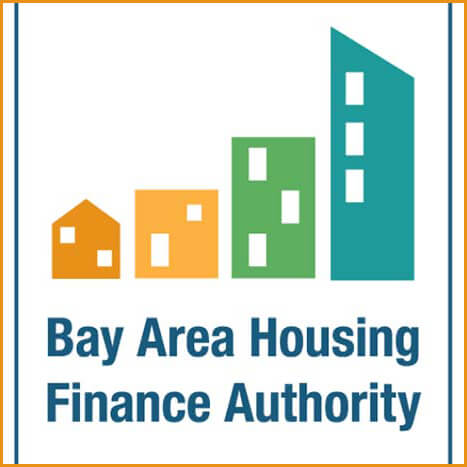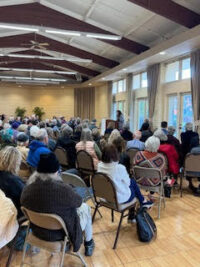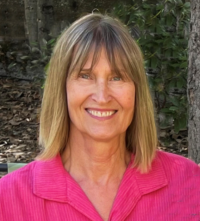In April of this year, the Executive Board of ABAG (Association of Bay Area Governments), adopted a resolution supporting the action of the BAHFA (Bay Area Housing Finance Authority) Board to submit a ballot measure for a general obligation bond to finance affordable housing creation in an amount up to $10 billion to the voters of the nine Bay Area counties, including the County of Sonoma. General Obligation bonds are backed by the full faith and credit of the State of California.
The measure will appear on the November 2024 ballot and customarily must be passed by 2/3 of the voters in the counties. However, the California Legislature has approved a Constitutional Amendment to be voted on by the voters in 2024 which lowers the threshold for passage of the BAHFA bond to 55% instead of 2/3, if the Amendment passes.
Property owners will pay the bond back as part of their normal property tax bill. Estimates as of July 2023 indicate that the cost is $10.62 per $100,000 of the assessed value of the property. That means, for example, that the owner of a home with a $1 million assessed value would pay about $100 per year.
With reference to the proposed bond, Sonoma Mayor John Gurney notes, “I believe this is a real opportunity to begin to address our housing needs and meet some of our RHNA goals.”
For BAHFA’s ballot measure, there are additional legal requirements that must be satisfied. The Act requires that the ballot measure include: the purpose and goal, categories of eligible expenditures to be funded, estimated number of affordable housing units to be built and preserved by household income category, estimated minimum funding levels by expenditure category for each county, and an overview of decision making and oversight. The Constitutional Amendment, (ACA 1) includes other requirements, such as the creation of an oversight committee. The ballot question must also satisfy legal requirements, namely that it be nonpartisan, include the rate of payment, and be limited to 75 words.
BAFHA was created by the California Legislature in 2019 – the first regional housing finance authority in the state. According to its business plan, BAHFA has the potential to change the housing landscape with powerful new financing tools and a “3Ps” mission to produce new, permanently affordable housing; preserve existing affordable housing; and protect current residents from displacement.
The BAHFA Business Plan serves as a blueprint for how BAHFA can accomplish these near- and long-term goals. The Business Plan has four main parts:
- Chapter 1: Legislative and Business Planning Overview describes BAHFA’s legislative requirements, the regional planning context, and BAHFA’s governance structure.
- Chapter 2: Equity Framework Summary provides an overview of BAHFA’s Equity Framework which was developed with substantial community input and sets guiding principles to advance equity and social justice.
- Chapter 3: Funding Programs describes financing opportunities that will maximize BAHFA’s impact, leverage additional funds, and efficiently deploy public dollars.
- Chapter 4: BAHFA’s Operations and Organizational Sustainability Plan describes current and future staffing needs and identifies how BAHFA will achieve financial self-sustainability while delivering on its 3Ps mandate
The nine Bay Area counties will retain 80% of the funds raised, with distribution based upon each county’s financial contribution to the bond. Counties and cities will separately plan for the 80% of funding they administer. BAHFA will retain 20% of the funds raised. It is contemplated that BAHFA will become a self-sustaining, specialty public lender in the long-term – transforming the housing finance ecosystem to deliver results long after the general obligation bonds are spent. Currently, lending activity is conducted by private banks and other financial institutions which capture and distribute profits to their shareholders.
The 80% of funds available to counties and cities must be spent as follows: 52% on housing production, 15% on preservation, 5% on protection, and 28% flexibly. The county and city funds may be used for either rental or homeownership housing.
Specifically,
- 52% of funds must be used for new affordable housing that prioritizes projects that will help meet the jurisdiction’s extremely low-, very low- and low-income RHNA housing targets. This may be rental or ownership, permanent supportive housing, low-income housing or workforce housing, so long as it’s deed-restricted and affordable to households earning up to 120% of the area median income.
- At least 15% of funds must be used for deed restricted, affordable housing preservation.
- At least 5% of funds must be used for tenant-protection programs.
- 28% of funds may be spent on housing and housing-related uses, like infrastructure and neighborhood amenities, so long as it complies with these general terms: – Conformance with the adopted county expenditure plan – A cap on affordability at 120% of area median income – Imposition of a deed restriction on the affordable housing
Should a bond measure be approved in 2024, funding would likely become available as soon as 2025. The Plan anticipates bond proceeds would be disbursed by BAHFA and its local partners over a period of 10 to 15 years for a $10 billion bond.
According to Sonoma City Manager David Guhin, who has been in discussions with county officials about the ballot measure, funds allocated to Sonoma County are estimated to be in the range of $268 million and would be disbursed by the county with approval of the Board of Supervisors to projects in unincorporated areas and each of the cities in the county (not including Santa Rosa, which will be funded with its own separate allocation). The precise methodology for determining allocations to cities has yet to be determined and may be proportionally based or based upon project readiness; the county’s methodology will be determined by September of this year.
In comments to the Sun, First District Supervisor Elect Rebecca Hermosillo “thinks the concept is good” but has labor concerns, among others. “Taxation on rural, undeveloped, and agricultural land hasn’t really been addressed.” She wonders about how allocations will be determined. As for the 20% retained by the finance authority, she wonders, “I don’t know where that money will go. How do we get our fair share in Sonoma County? There are still many unanswered questions.”
Mayor John Gurney is hopeful. “Housing has been a goal for this and previous councils. We have made minimal progress using current assessments. Housing is expensive and we need resources to be able to fund these kinds of developments. After reviewing the proposed BAHFA measure and its proposed implementation, not only will it provide significant funding for new affordable housing but also support community members with tenant protection programs.”
Mayor Gurney’s sentiments were buttressed by those of Sonoma’s Vice-Mayor, Patricia Farrar-Rivas. “Our City Manager David Guhin is working closely with the Director of the Sonoma County Community Development Commission, Michele Whitman to prepare for the passing of the BAHFA Bond. The city is identifying potential projects and is in discussions regarding how money will be distributed if it passes.”
Funds for the creation of Affordable Housing used to be provided by the State of California to regional, county and city redevelopment agencies, but those agencies were dissolved in 2011 due to concerns about misuse of funds. Until this BAFHA measure, no major source of state funding has been available, and the production of affordable housing by local jurisdictions has slowed. Nonetheless, through its Regional Housing Needs Assessment (RHNA) the state has set targets to produce housing in each jurisdiction, in successive eight-year periods.
“Funding is one of our biggest barriers to develop ultra-low income, affordable and workforce housing, and to preserve the stock of affordable housing we currently have,” noted Farrar-Rivas. “The passage of this Bond is essential.”
Report by Larry Barnett








Be First to Comment